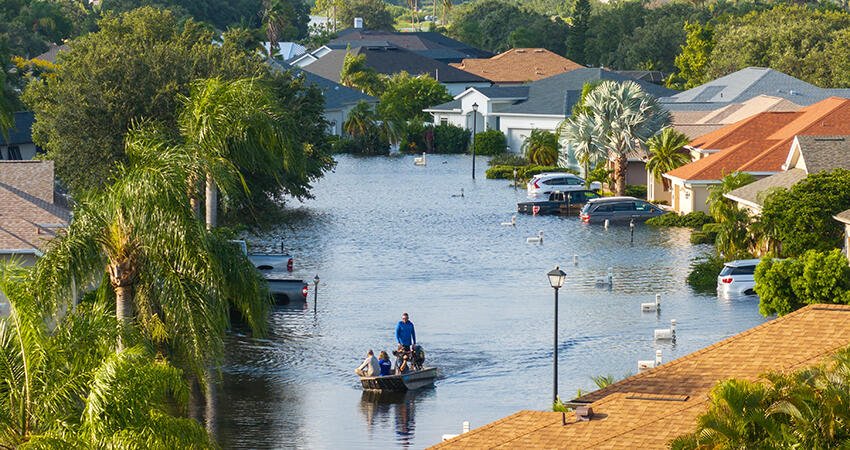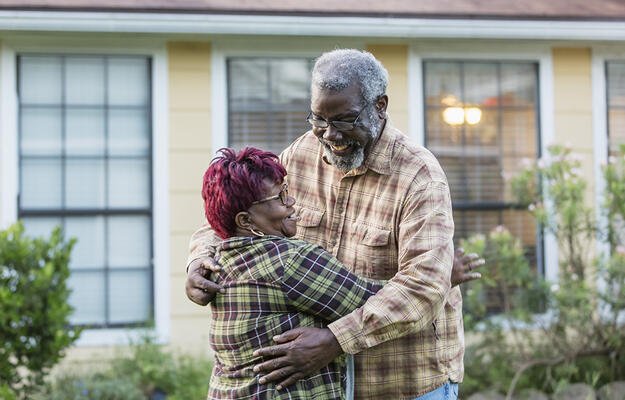
(Bilanol/Shutterstock)
Who Stays and Who Moves After a Climate Disaster?
- Title:
-
Income-based inequality in post-disaster migration is lower in high resilience areas: evidence from U.S. internal migration
- Author:
-
Ted Hsuan Yun Chen, Boyoon Lee
- Source:
- Publication Date:
-
2022
As climate change increasingly threatens the country’s housing stock, residents may choose—or be forced— to relocate or stay. But not everyone can just pick up and move. Expenses come associated with both disaster recovery and moving. So, who moves? This study explores the correlation between household income and community capacity for resilience after climate disasters.
To test this, the authors created a network dataset spanning 2009 to 2018 that shows the internal migration flow between counties in the US and county-level characteristics, including disaster exposure and median household income. Counties with a population of 20,000 or fewer were excluded, as were Alaskan and Hawaiian counties. This still retained more than 90 percent of all internal migration in the US.
To test the degree of internal migration, they used Internal Revenue Service data that estimates moves using taxpayer address data. They also used data from the Spatial Hazard Event and Loss Database, which contains estimates of economic losses and personal harms at the county level to capture the severity and property damage from climate disasters. Income was measured using county-level median household income from the American Community Survey. Finally, to capture resilience, they used the community capital and institutional capacity indices—which focus on community connectivity and collaboration among critical stakeholders—from the Baseline Resilience Indicators for Communities index (BRIC). BRIC comprises six categories of community disaster resilience that reflect capacity to recover from disaster on a local community and institution level. Using this data, they fit annual network regression models.
The authors find that households in poorer counties are more likely to stay in place after experiencing disasters unless the area has high disaster resilience. These findings suggest that uneven capability to move after a disaster may exacerbate socioeconomic inequalities and disproportionately harm households with low incomes, but disaster resilience can offset such inequalities.
Key findings
- Intercounty migration increases with property damage associated with these disasters. But response patterns vary by economic status of those affected.
- Ignoring differences by counties’ disaster resilience, in areas with lower income, an increase from no property damage to the median observed property damage of a given year is associated with a statistically significant decrease in outmigration of approximately 5 percent. This is reversed for regions with higher incomes, where exposure to disaster-related property damage is associated with a 5 percent increase in outmigration.
- However, this masks the difference in postdisaster outmigration between low- and high-resilience areas. Taking disaster resilience into consideration, among counties with low levels of resilience, people living in lower-income areas are even less likely to migrate (–10 percent) while those living in higher-income areas are even more likely to move (20 percent). Among counties with high resilience, all are less likely to move.
- Relocation and resilience measures are two ways residents adapt to climate change, and where possible, folks elect to stay in place. Those with high incomes who have the means to relocate, choose to stay if they are in a high-resilience area but relocate from low-resilience areas. Those with lower incomes, on the other hand, become trapped in low-resilience areas.
- When relocating, households are not significantly seeking out areas of higher disaster resilience.
Policy implications
- Reducing income and wealth gaps could reduce disparities in residential relocation.
- Increasing local resilience capabilities can help alleviate climate-related socioeconomic segregation by providing resources for people to stay and restore disaster-hit areas. At the same time, policies should avoid overly incentivizing people to stay in highly vulnerable areas to prevent further danger.


